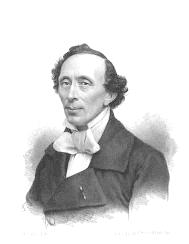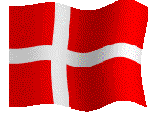Materials - and Vladimir Propp (scroll down!)
For this class, you will need to be able to read all the tales.
Maybe you prefer doing it online, where you may find several good versions.
But if you want to have everything in one book, I highly recommend that you buy
Hans Christian Andersen, The Complete Fairy Tales and Stories
Translated by Erik Christian Haugaard,
Anchor Books, ISBN 0-385-18951-6
The other required reading - which
you cannot find online - is:
Danish Folk Tales, Collected by
M. Winther (1823)
WITS II, Number 5
More
Than Just Fairy Tales (MTJFT)
ed. Julie Allen
Cognella Press, 2013
The required material for my LIT TRANS 275 | SCAND 475 course, More Than Just Fairy Tales, is published and distributed by Cognella Academic Publishing. The material is now available for purchase in both print and digital formats.
To purchase the material, please follow the instructions below. Video instructions for placing an order and downloading an eBook are available at: https://vimeo.com/195821361.
1. Visit https://students.universityreaders.com/store/.
2. Create an account or login if you have an existing account.
3. Select your state and then your university from the dropdown menu.
4. Scroll to find your LIT TRANS 275 | SCAND 375 listing and select More Than Just Fairy Tales from the list. Choose your preferred textbook format, and follow the checkout instructions to complete your purchase. Payment can be made using all major credit cards.
If you purchase an eBook, you will need to download Adobe Digital Editions, a free eBook reader created by Adobe Inc. Please note, Cognella eBooks can only be accessed digitally and cannot be printed.
If you purchase a print copy, immediate digital access to the first 30% of the material can be gained by logging in to your Student Store account and clicking "My Digital Materials". (You may need to download Adobe Digital Editions for access).
If you choose to purchase one format now (either print or eBook) and decide you'd like to purchase the other format during the term, you can login to your Student Store account and purchase an add-on at a discounted rate.
The material includes course topics we will reference and use in class regularly, so you should purchase your own copy. Please keep in mind our institution adheres to copyright law. Course materials should never be copied or duplicated in any manner.
If you experience any difficulties while ordering your material, please email orders@cognella.com or call 800.200.3908 ext. 503.
***********************************************************************************************************
Vladimir Propp:
Vladimir Propp was a Russian structuralist scholar who concentrated his scholarship on the Russian folktale. Working in Stalinist Russian, it took considerable time for his research, carried out in the 1920s and 1930s, to reach the West. It was not until the 1950s that his work was translated. Propp's studies inspired such prominent scholars as Claude Levy-Strauss and Alan Dundes, to name a few. He discovered that all Russian magic tales had a similar structure and contained the same elements in the same order, though no single folktale contain all the elements. The fact that all magic tales contain these same elements, but that no single tale contain all the Propp detected 31 different plot elements, which he called functions, that can be found in the magic tale:
- One of the members of a family absents himself from home.
- An interdiction is addressed to the hero.
- The interdiction is violated.
- The villain makes an attempt at reconnaissance.
- The villain receives information about his victim.
- The villain attempts to deceive his victim in order to take possession of him or his belongings.
- The victim submits to deception and thereby unwittingly helps his enemy.
- The villain causes harm or injury to a member of a family/ or,
VIII a. One member of a family either lacks something or desires to have something.
- Misfortune or lack is made known; the hero is approached with a requestor command; he is allowed to go or he is dispatched.
- The seeker agrees to or decides upon counteraction.
- The hero leaves home.
- The hero is tested, interrogated, attacked, etc., which prepares the way for his receiving either a magical agent or helper.
- The hero reacts to the actions of the future donor.
- The hero acquires the use of a magical agent.
- The hero is transferred, delivered, or led to the whereabouts of an object of search.
- The hero and the villain join in direct combat.
- The Hero is branded.
- The villain is defeated.
- The initial misfortune or lack is liquidated.
- The hero returns
- The hero is pursued.
- Rescue of the hero from pursuit.
- The hero, unrecognized, arrives home or in another country.
- A false hero presents unfounded claims.
- A difficult task is proposed to the hero.
- The task is resolved.
- The hero is recognized.
- The false hero or villain is exposed.
- The hero is given a new appearance.
- The villain is punished.
- The hero is married and ascends the throne.
This list of elements has been simplified by a number of critics. For practical purposes, we call it Propp-R (R is for Revised):
- Protagonist has initial harmony.
- Protagonist discovers a lack.
- Protagonist goes on a quest.
- Protagonist finds helpers/opponents
- Protagonist is given tests
- Protagonist is rewarded, or a new lack develops
When using the second model, it is traditional
to discuss the number of moves. A move
occurs each time the hero goes through elements 1 through 5, until
all the lacks are eliminated and the hero is given his final reward
and the story ends.
Propps' Dramatis Personae
1) Hero (also the Seeker or Victim)
2) Villain
3) Donor( from whom the hero gets some magical
object)
4) Magical Helper (the character the helps the
hero in the quest)
5) Dispatcher (the character that makes the lack
known)
6) False Hero (the character who takes credit for
hero's action)
7) Prince / Princess (person the hero marries)
8) Victim (person harmed by the villlain if not
the hero)
Written by Scott Mellor and Nete Schmidt |





